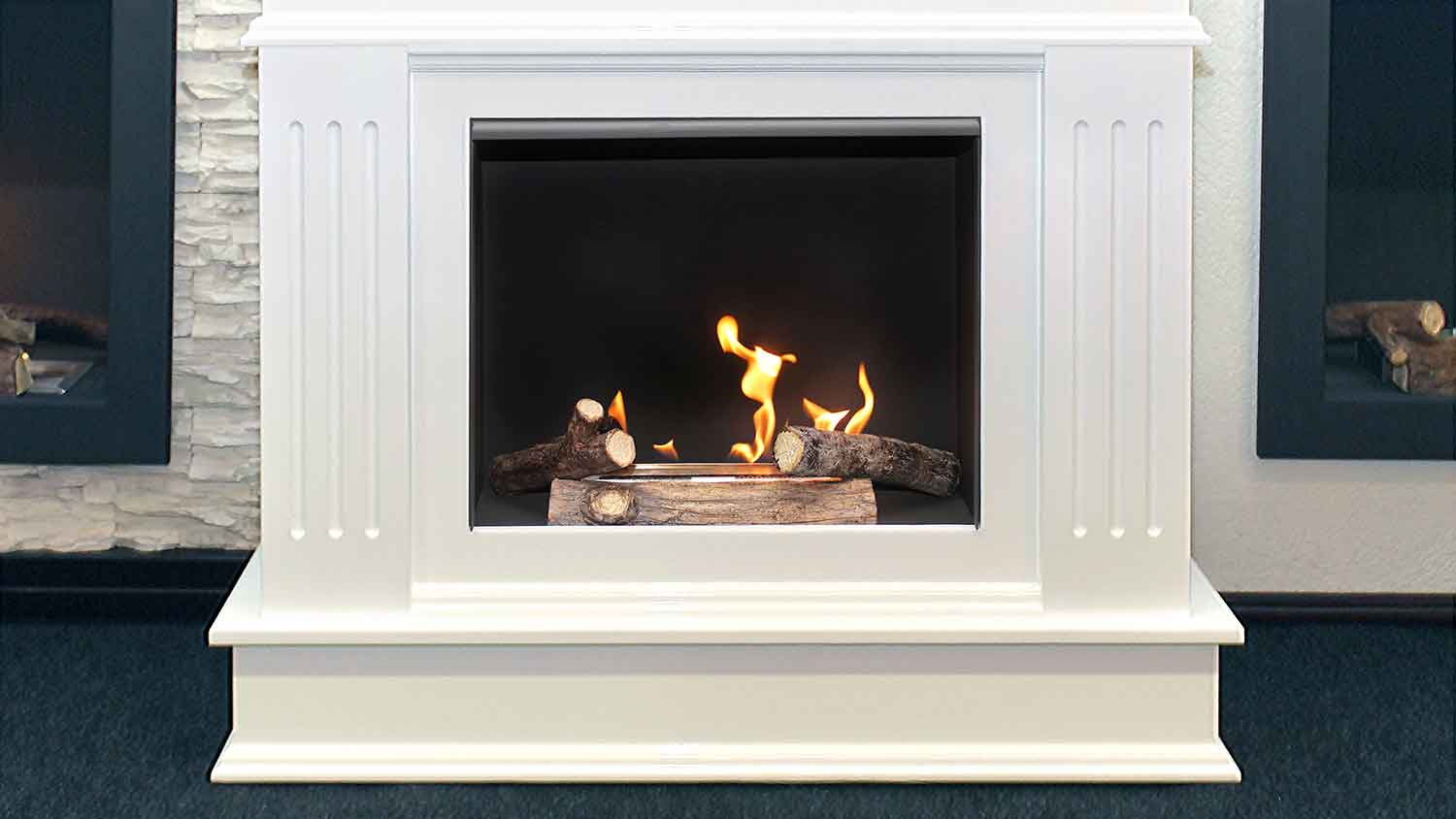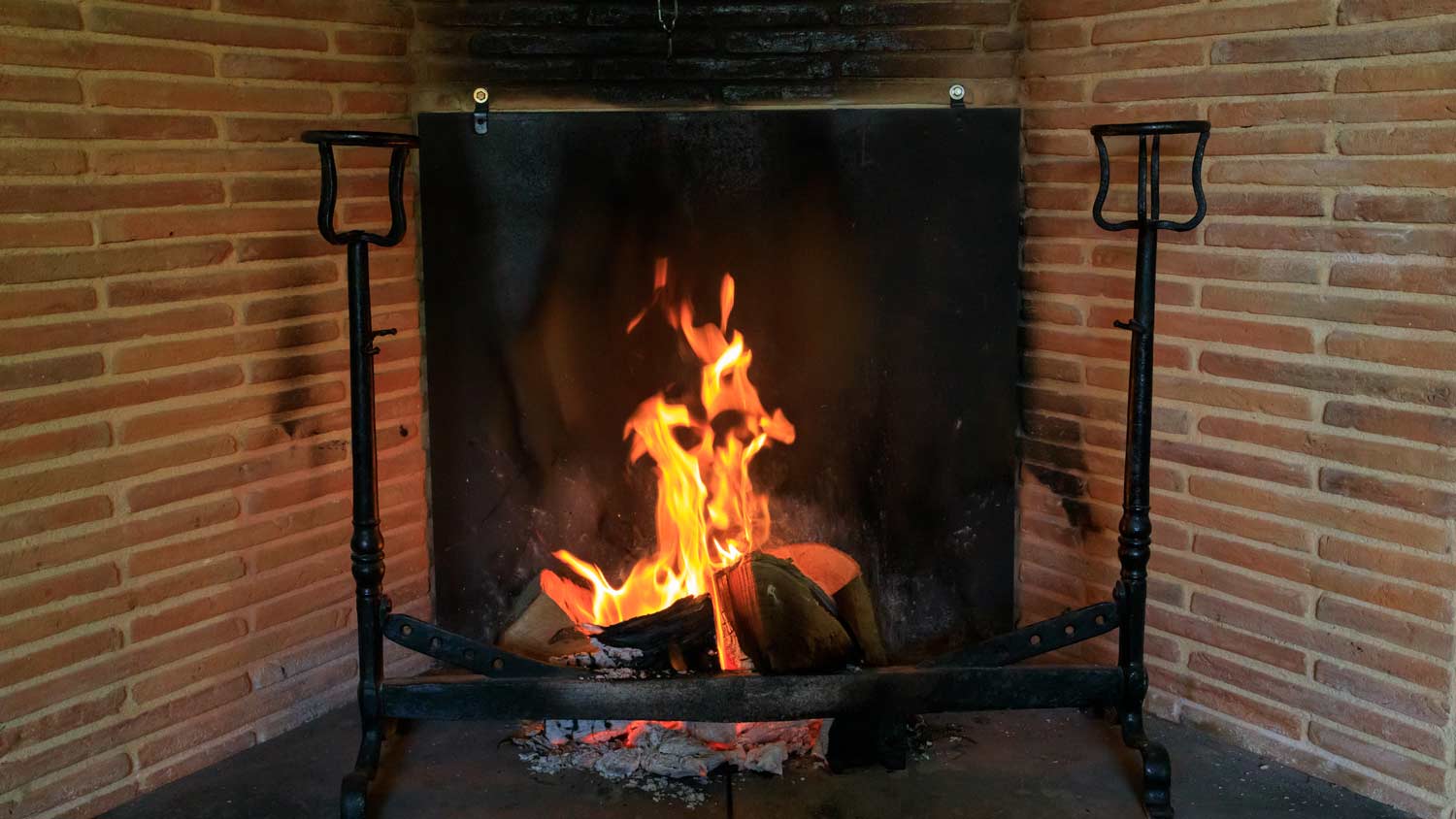What Is a Fireplace Hearth and Why Do I Need One?
A fireplace hearth provides your home protection and a stylistic focal point


Fireplace hearths protect the home while elevating the design.
Hearths come in two heights: floor-level and raised.
Hearths are necessary for gas and wood-burning fireplaces.
There is a variety of stone and brick options for hearths.
Some materials will require professional installation.
The average fireplace installation costs $2,400.
There’s nothing more comforting than the slow, methodical crackle of a fireplace on a cold night. For centuries, the fireplace hearth has been an essential element—and notable focal point—in many homes. But the hearth is more than a cozy gathering place or holiday card backdrop. The fireplace hearth is a protective element that keeps your home safe by keeping the flames and their embers contained.
What Is a Fireplace Hearth and What Is It Used For?
The fireplace hearth is the horizontal area that extends from the fireplace’s firebox, which is the inner section of the fireplace where you light and burn fires. It is a protective foundation made of noncombustible materials such as stone or brick. The fireplace hearth also extends along the sides of the fireplace. Gas and wood fireplaces typically have hearths, which should extend at least 16 inches in front and 8 inches on each side.
Fireplace hearths come in two different heights: flushed (floor-level) and raised. Fireplace hearths are also a key feature of interior design thanks to their charming, yet functional, exterior. There are several different types of stone for fireplace hearths, giving homeowners plenty of design options. Marble creates a luxurious, elegant focal point that’s ideal for rooms that see a lot of foot traffic from parties and other gatherings. Slate gives your fireplace hearth a calm, earthy vibe—perfect for family rooms and vacation homes.
Fireplace hearths aren't optional for gas or wood-burning fireplaces because they're a safety feature. Most building codes (and insurance companies) require you to have one.
Flushed vs. Raised Fireplace Hearths
No matter if you’re building a new home or renovating your current space, you’ll want to spend some time deciding between a flushed or raised fireplace hearth. Often, the choice boils down to an aesthetic preference, but each design has functional consequences, too.
Flushed (floor-level) hearths easily meet building codes, as long as they extend 16 to 18 inches from the firebox. Many builders and interior designers like this fireplace hearth type because it allows for continuous flooring, creating an uninterrupted, uniform look. If there are small children or curious pets in your home, you may want to consider extra protection around the firebox so that no one accidentally burns themselves.
On average, raised fireplace hearths are about 15 to 17 inches tall, which creates more space between the mouth of the fireplace and the floor. Some homeowners prefer raised hearths because they offer additional seating. This hearth type sometimes costs more because of the additional materials needed to build them.

6 Types of Fireplace Hearths

Just as there are different types of fireplaces, there are several options when it comes to choosing material for a fireplace hearth. Some of the most popular choices are:
Brick: This is the more traditional option, as bricks are readily available and more affordable than some of the other options. A brick hearth is easier to repair, but you’re often limited in creating a unique design.
Ceramic: Heat- and corrosion-resistant, ceramic is an ideal choice to pair with wood-burning fireplaces. This material is available in a vast range of colors and styles, making it highly customizable and a homeowner favorite.
Granite: If you’re looking for a sleek, smooth finish, this igneous rock is your best bet. Typically, this option is more expensive to install because it requires a custom order from a manufacturer.
Limestone: Many builders like to use limestone for fireplace hearths because it’s inexpensive yet durable and fire-resistant. Plus, it’s easier to cut the exact shape and size needed—a great option if you’re looking to create a unique design around your fireplace.
Marble: Go with this material for instant elegance. A couple of drawbacks are that marble is porous, meaning it can hold on to stains from spills, and it’s more prone to chipping.
Slate: You’ll get a variety of color options with this stone, and it’s one of the more easily cleaned of all the options. You might want to hire a pro for installation, as the different pieces come in different shapes and sizes—unlike traditional bricks and ceramic tiles.
Installing Fireplace Hearth Tiles
Fireplace hearth tiles are a good place to start when looking for fireplace remodel ideas. Installing fireplace hearth tiles on your own can be a challenging project, as there are several tools involved and steps that require focus and a steady hand.
Before starting, you’ll want to check local building codes. Then comes preparing the substrate and dry setting the tiles to ensure you have the perfect pattern and placement. The more difficult part of this DIY comes with cutting and setting the tiles, followed by applying grout and seal.
Installing fireplace hearth tiles can be tricky, as the hearth is a visible spot in any room. A local fireplace installer and builder can offer professional advice and a steady hand if you decide to hire them for this project.
Is a Fireplace Hearth Installation Worth the Price?
Realtors agree that installing a fireplace can increase a home’s value, but the desire for them seems to be waning among buyers. The average fireplace installation cost is $2,400, while the average fireplace remodel costs $1,200.
There are pros (e.g. interior appeal and an additional heat source) and cons (e.g., expense and maintenance) associated with installing a fireplace. Ultimately, the decision is up to the homeowner, and it’s often based on their personal style and wants.
Popular Hearth Accessories

If you’ve ever watched HGTV, you know there are limitless possibilities when it comes to hearth accessories and decor. Here are some of the most useful accessories to consider:
Fireplace screen
Log rack
Fireplace poker
Fireplace shovel
Hearth rug
Hearth chair
Frequently Asked Questions
A fireplace hearth is a fireproof flooring material that extends out from the base of the fireplace and into the room. Hearths can be made of brick, ceramic, marble, limestone, and more. A hearth serves the purpose of decreasing the fire risk in the area directly around the fireplace. If flying embers hit carpet or wood, they’ll spark and create a fire. But if they hit something like tile or granite, they’ll simply go out.
A hearth often looks like a tile or brick floor that juts out from and surrounds your fireplace. A hearth can be made of stone, brick, ceramic, or any other fireproof material. Brick offers a classic and traditional vibe, whereas a hearth made of marble or ceramic may lean more toward modern aesthetics. The most common depth of a hearth is 20 inches.
A fireplace hearth is necessary in most areas per building codes, especially for gas and wood-burning fireplaces. Electric fireplaces may not require a hearth, so check local building codes or ask a pro for guidance if you’re leaning toward electric. A fireplace hearth can decrease the risk of flying embers creating a fire and burning your home down. That’s why fireproof material, like tile, is used for the hearth.















